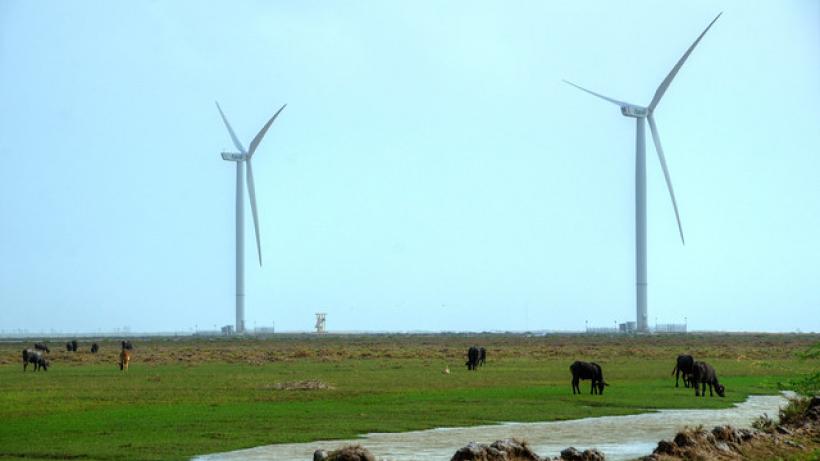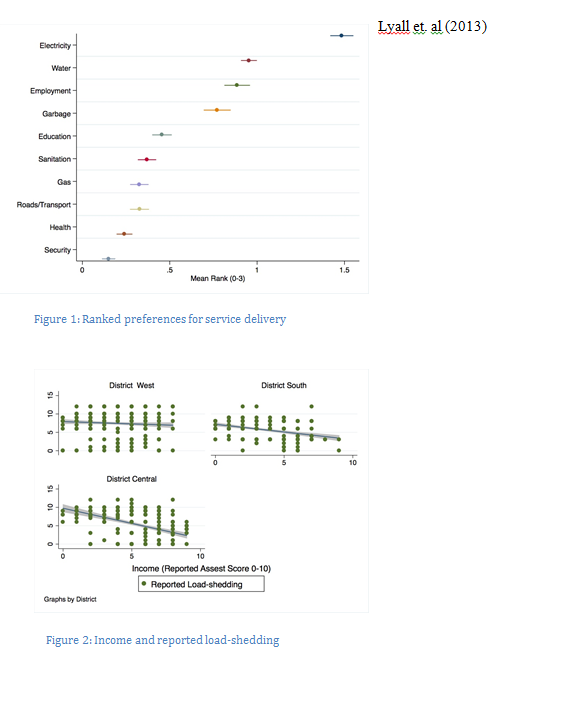
Don’t shoot the messenger – electricity theft and trust in Karachi, Pakistan
We assume that more information makes markets work better. Information can provide individuals incentives to act better. However, in some situations, information on poor behaviour can lead to mistrust, not just of other people, but of the institution that delivers the message.
The Karachi setting
Karachi is Pakistan’s largest city and industrial hub, home to 16.6 million people. The city’s primary challenge has been providing public goods to the rapidly growing metropolis. Through decades of federal and local, democratic and military-autocratic rule, the service delivery challenge in Karachi remains largely the same. The government is in a perpetual state of catch up, eventually meeting consumer demands by allowing for a patchwork of public, private, and semi-privatised service delivery channels.
The provision of electricity is no exception. Approximately 2,475 megawatts (MW) of electricity flow into this power-hungry industrial town every hour. The supply is made up primarily of thermal and nuclear Independent Power Providers (IPPs) outside the city. Inside its porous boundaries, distribution and revenue collection was managed by the Karachi Electric Supply Corporation (KESC), a colonial-era public corporation that parallels other distribution corporations (“Discos”) in other major cities. Demand outstrips supply considerably, and discos cope by instituting neighbourhood-level “load-shedding”: periods of power outages, particularly during hot summer months.
Partial privatisation turning a profit
KESC struggled through a series of reforms in the 1990s and was finally set up for partial privatisation in 2005. The government remained a 26% shareholder. The transformation of the company is credited to its takeover by the Abraaj Group, a Dubai-based private equity firm, which bought KESC in 2009 for $361 million. At the time, the company was reporting a loss of $136 million, in 2015-16 it reported a net profit of 17.3%.
But electricity provision still a primary concern
In spite of the transformation of electric power supply in Karachi under K-Electric, electricity remains a primary concern for individuals in the city (Figure 1). In an independent survey conducted in July and August 2018, electricity was ranked as a priority higher than even water, of which Karachi faces major shortfall. Over 50% ranked electricity as a major priority for improvement. The two key concerns in the service delivery of electricity are power outages (“load-shedding”) and the cost of electricity (“over-billing”). On average, individuals reported receiving at least three bills in a calendar year that they felt were unfairly high. Individuals reported an average of six hours of load-shedding in the summer, and five hours in the winter months. The mean income for the sample is Rs. 35,000 (~£200), which is considerably higher than the mean income reported for Pakistan at £41 (Pakistan Bureau of Statistics). These urban households are therefore not the poorest of the poor, but experience high load-shedding and struggle to pay their bills – over 40% of households reported skipping or only partially paying at least one month of bills.
A study measuring trust in institutions in the context of electricity
My study, supported by the International Growth Centre (IGC), uses survey data and a survey experiment to measure trust in institutions in the context of electricity service delivery in Karachi.
The source of data for my study is an original face-to-face, 35-minute survey conducted in Karachi between June and August 2018. Over 1000 participants across three districts in the city were selected using stratified random sampling. Within each district, 5-8 Union Councils were selected based on district population. Within each Union Council, 2-3 points were selected from a dataset of over 25,000 electricity transformer geo-locations. This presents two advantages:
- It enables unique information on service delivery at each data point.
- It enables the inclusion of only those households connected on the electricity grid, although the overwhelming majority of households in Karachi are served by (legal and illegal) connections to the grid.
How well does income predict reported and actual load-shedding? Is it possible to differentiate between willingness and ability to pay?
The results vary depending on where in Karachi you happen to live. In District Central, individuals at higher levels of income (measured using an asset score[1]) report less than five hours of load-shedding during the summer (Figure 2). This suggests that the quality of service delivery is linked to individuals’ ability to pay – higher income households pay their bills, and therefore are not burdened by load-shedding by the utility company. In District South, a similar pattern holds, although it is less strongly correlated. In District West, the line is nearly flat: high-income households report similar rates of load-shedding as their low-income peers.
It is tempting to conclude that the lack of improved service delivery in medium-income neighbourhoods in District West is driven by unwillingness to pay. However, individuals in District West report paying bills with about as much frequency as their District South and Central peers. To investigate this puzzle, I spent six months in Karachi speaking with individuals in Districts South, Central, West and Korangi. I found that many medium income households found themselves stuck in bad neighbourhoods. Imagine living in an apartment building where you are one of the few people who pay bills on time. The aggregate collection from the building is still too low to justify the utility company decreasing the hours of load-shedding. So your choice as an individual is to continue to pay in spite of bad service, to stop paying, or to move.
High load-shedding leads to lower trust
I wanted to know how load-shedding affects more subtle measures of governance and conflict, such as trust. I found that individuals in high load-shedding areas generally have lower levels of trust in institutions, and are less likely to participate in civic activities such as voting.
The survey team then conducted an “endorsement” experiment[2]. We informed individuals that load-shedding was linked to theft, attributing the information to either the political government, the private utility company, or to generic popular opinion (placebo). I found that individuals have lower levels of trust in political government, and generally trust elected representatives less. Somewhat surprisingly, they do not trust the private utility firm any more than the political representatives – possibly because they blame them for high load-shedding and costly monthly bills. Finally, and most importantly, when told that load-shedding was linked to theft, they were less likely to report trusting their neighbours, regardless of whether the message was attributed to the political government or the private firm.
An uphill battle
We can therefore expect that reducing theft and improving trust in service delivery institutions to be an uphill battle in Karachi. Bad neighbourhoods play a key role in widespread load-shedding across the income spectrum, whilst the poor electricity service provision leads to lower trust in institutions.

[1] Such asset scores are common where reliable income information is not available to respondents, particularly in informal and seasonal labour economies (Besley et al. 2005).
[2] The survey experiment adapts Lyall et. al (2013) and Fair et. al (2013), in order to examine the effect of statements on service delivery and theft by private service delivery providers, and local politicians.

